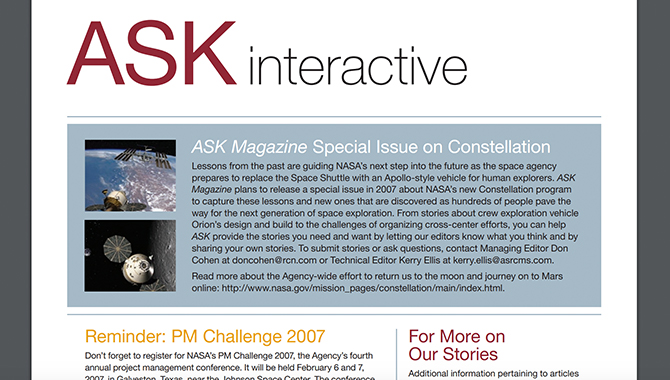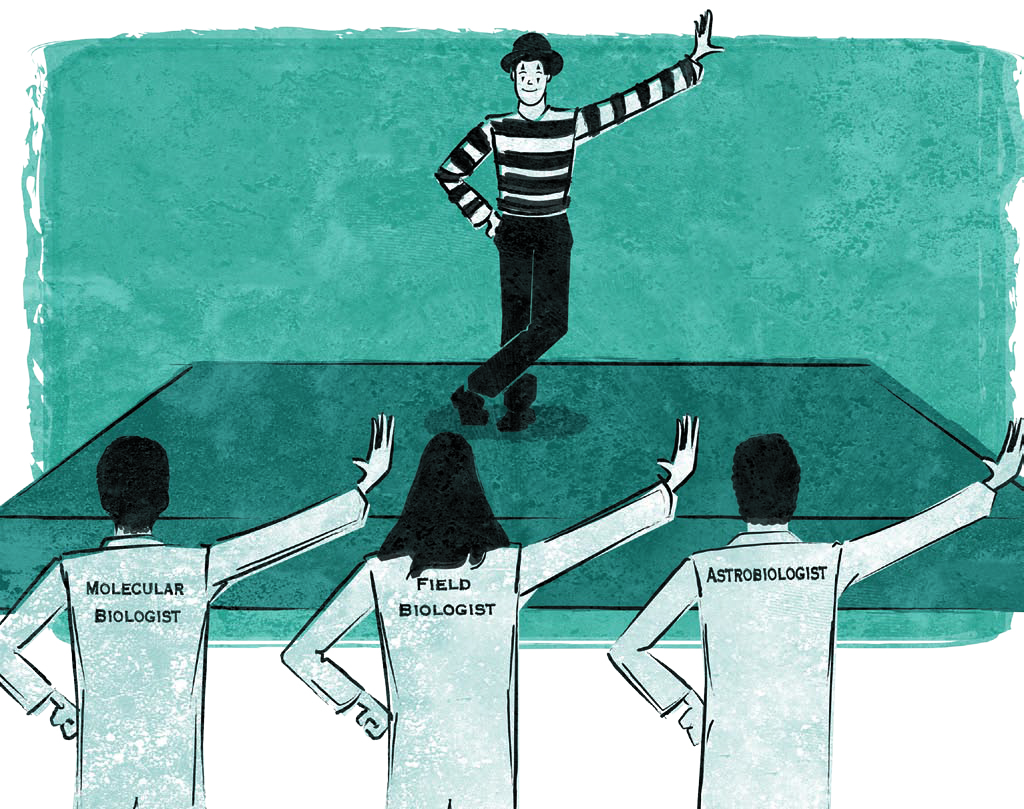By Laurence Prusak
While we at NASA are very aware of research and activities related to every aspect of outer space, there are other kinds of space that have been gaining the attention of organizational researchers and practitioners.  These include social space and cognitive space, which are increasingly seen as important factors in how successfully organizations can pursue the ever more important goals of collaboration and innovation.
These include social space and cognitive space, which are increasingly seen as important factors in how successfully organizations can pursue the ever more important goals of collaboration and innovation.
What do we mean by “social space”? I have an old friend who has done quite well for himself and lives on Central Park West, near 95th Street in New York City. His immediate neighborhood, across from Central Park and full of stately apartment buildings, looks and is quite prosperous. But just a few yards further north on the same street, the population shifts dramatically. Residents here are working class people; the buildings they live in are functional but far from prosperous-looking. Despite the close proximity of their dwellings, the social distance between my friend and his neighbors is huge in terms of income, education, employment, and almost every other social category. They occupy different social spaces. Although they live literally a minute’s walk from one another, contact between them is minimal.
This is not just a phenomenon of New York City life or city life in general. Similar social distance exists in many if not most organizations. Some commentators point to the positive relationship between physical proximity and collaboration, and they are right to suggest that — all else being equal — a workspace that encourages meetings between people can make sharing expertise easier. But, as my New York City example suggests, physical collocation is no guarantee of mutual understanding, shared goals, cooperation, or even much contact. Rigid hierarchies, which are still the norm for many organizations, create vast social distances between employees. Knowledge sharing across these distances is rare and, when it does occur, rather ineffectual. It is true that sometimes organizations create physical barriers that reflect and increase the distance between “classes” at work — mahogany rows where access to leaders is guarded by zealous executive assistants. But removing those barriers without significantly reducing the social distance will not improve communication. What you know and whom you speak to depends on where you are socially as well as physically. Among other things, this is why many executives only have a vague idea of what goes on in their organizations.
Social distance is one of many sources of differences in cognitive space — the ideas, assumptions, values, and perspectives through which one understands and acts in the world. People who inhabit very different cognitive spaces will naturally find it difficult to understand and work with one another. So this subject has also attracted the interests of researchers who want to increase collaboration and reduce “knowledge friction” in organizations. Sometimes this research takes a cultural turn, looking at cultural institutions and values to understand how and why cross-cultural teams and projects succeed or fail. At the Babson College Working Knowledge Research Program, we have looked at how cultural differences influence some cross-cultural collaborations. People in different parts of organizations — engineering, marketing, manufacturing, and others — tend to live in different cognitive spaces even when their general cultural backgrounds are similar.
Successful collaboration depends on bridging those cognitive gaps. For example, the Honda Corporation used to develop new car models in a linear fashion, with the research and development group handing off prototype models to operations, which in turn passed them on to marketing. Each group tried their best to modify the prototype according to their own perspective on what is feasible and what will sell. Not surprisingly, Honda found this method inefficient and ineffective. They began to insist that the groups work together to produce one prototype they all agreed on. They called this way of working “Knowledge Fusion.” It has proved to be a successful way of bridging knowledge and cognitive spaces in a productive way.
Intraorganizational collaboration is a life or death issue in our knowledge age. Not using the full knowledge of the organization when and where it is needed is a major handicap. Lessening social and cognitive distance increases the likelihood of influence, familiarity, trust, and empathy. It is difficult to help a person in their knowledge search if one “lives” far from him or her in terms of social space.
Getting out of your own social and mental space and genuinely interacting with others not in your social group is a good way to start. (The fact that this rarely happens in many organizations is one reason for the increasing social and cognitive distances we see everywhere.) Another road may be to ensure projects and teams are staffed with people from differing social and organizational groups. Most people get to know and like others with whom they work on a continual basis, and this, too, can help overcome social barriers.
We don’t expect these walls to fall with a mighty crash any time soon, any more than we think that New York’s social divisions will dissolve. But the issue has been neglected for too long, and the hope that merely calling for collaboration or designing a more open and accessible office plan will overcome the problem is bound to be dashed. Social and cognitive space matter.








